American student Barbara Donahue (then Barbara Finlay) lived in Italy between August 1937 and March 1938, when she was 7 and 8 years old. She attended a Catholic school, the Istituto Vittoria Colonna, in Milan. There, she was issued these small soft-covered government-produced student notebooks, decorated with colorful, dramatic illustrations. (The Donahue family are long-time family friends; Barbara’s son Bill showed me her collection of notebooks and allowed me to scan them.)
Barbara Finlay’s Italian education came at the tail end of a complicated 20-year project meant to teach loyalty to the Fascist regime in the country’s schools. Bill Donahue asked his mother to remember the curriculum she encountered. “It was all indoctrination published by the government,” Barbara told him. (He recorded her memories and sent them to me in an email.)
The textbooks said that Italy should have Ethiopia and that Mussolini was bringing prosperity back to Italy, developing farmland, building roads, and getting the trains to run on time. In one of the notebooks, there were two kids side by side. One is doing something patriotic [she can’t remember what], the other isn’t. You’re supposed to figure out which one is better. It isn’t too hard.
Barbara remembered marching in a parade for the King’s birthday, wearing a Brownie uniform while the rest of the kids wore their Piccola Italiana outfits. “There was a whole phalanx of kids in their proud uniforms, and I was in my proud uniform,” Barbara said. “The Italians were at war, and they were proclaiming what they thought was theirs. They’d been denied by the Versailles Treaty. They’d gotten nothing out of it.”
The illustrations on the front of the notebooks tell positive stories of a modernized Italian army: the successful invasion of Abyssinia (Ethiopia) in 1935 and the Italian colonial presence in Africa. A few of the notebooks have interesting illustrations on the back, too: a portrait of a “Piedi Neri” (or Blackfoot Indian)and a scene depicting Jesuit missionaries in Alaska helping “gli Esquimesi” by offering medicine to a sick man strapped to a dogsled.
That last scene shows how the Catholic Church retained an ideological presence in Italian education—constituting, as historian Richard J. Wolff argues, a sometimes uneasy bedfellow with the Fascist regime.
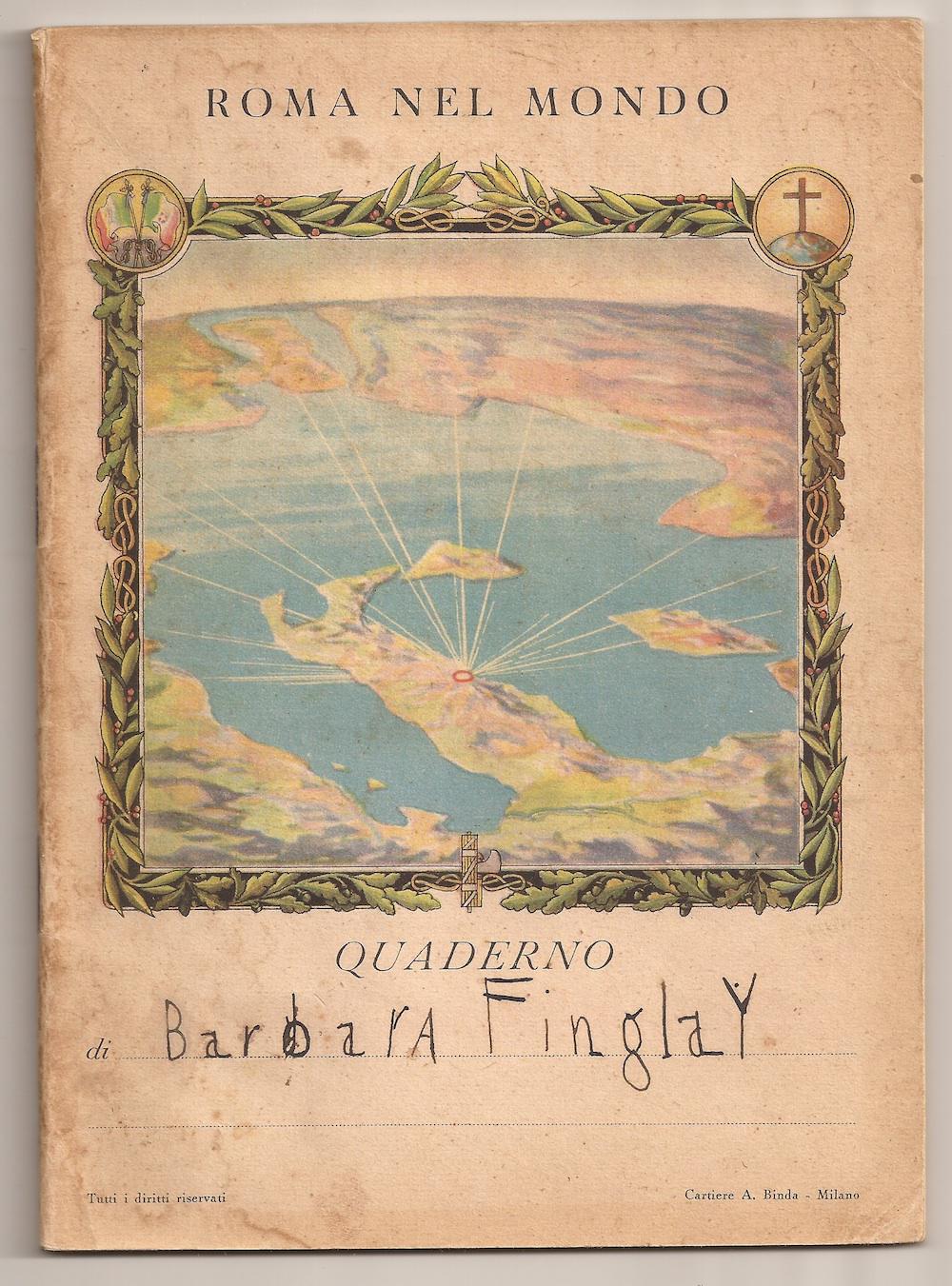
Barbara Donahue

Barbara Donahue

Barbara Donahue
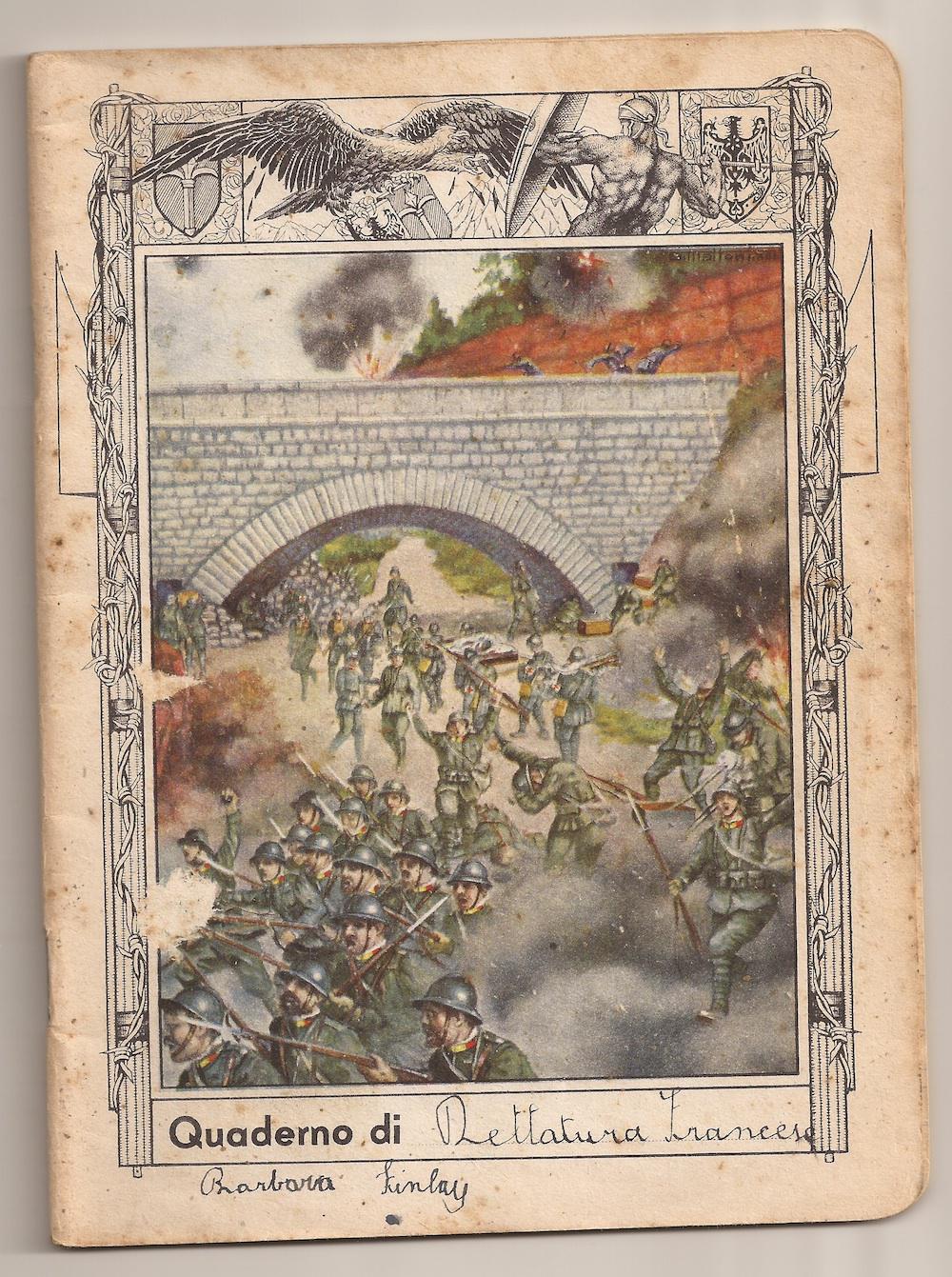
Barbara Donahue

Barbara Donahue

Barbara Donahue
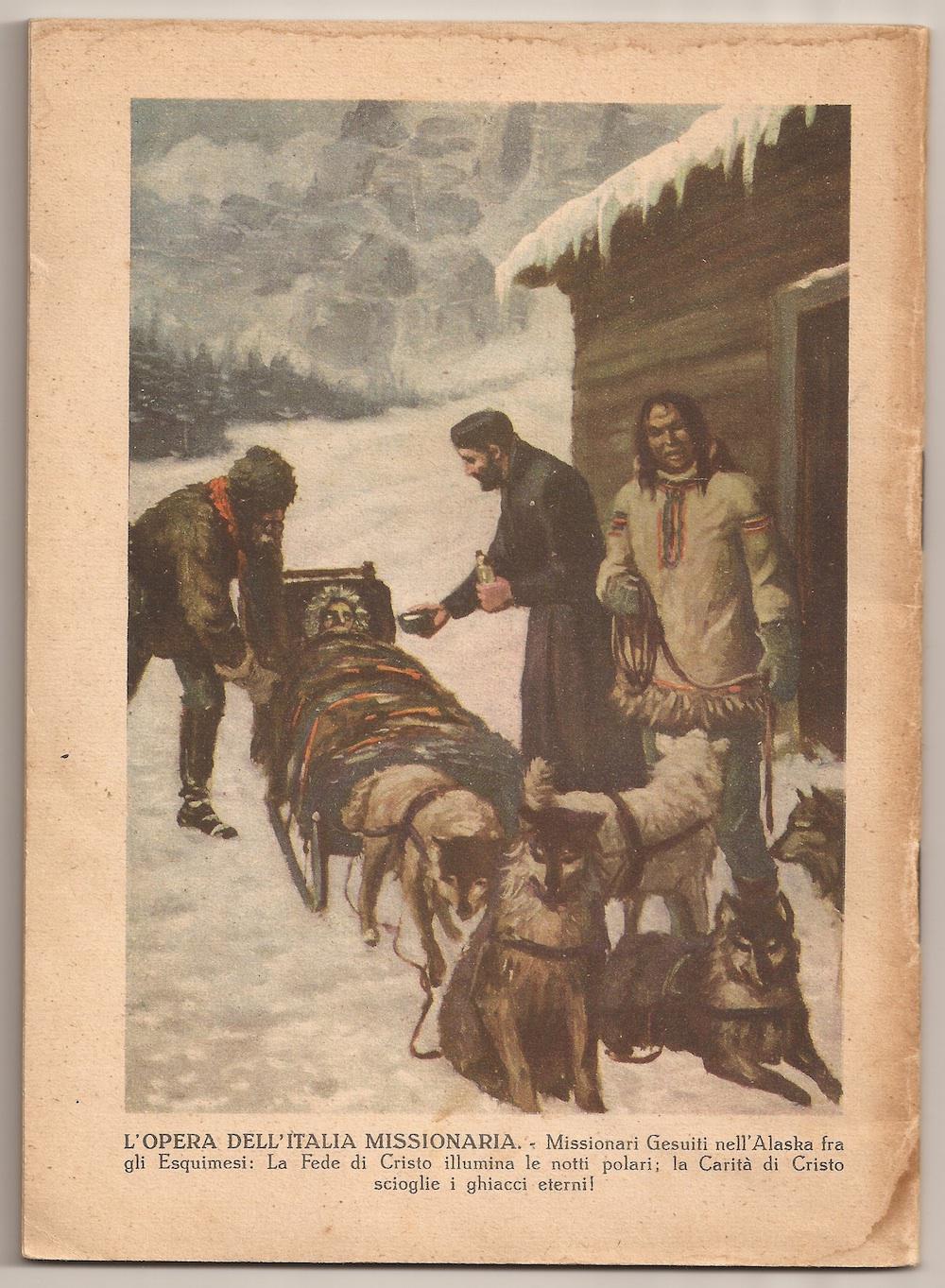
Barbara Donahue
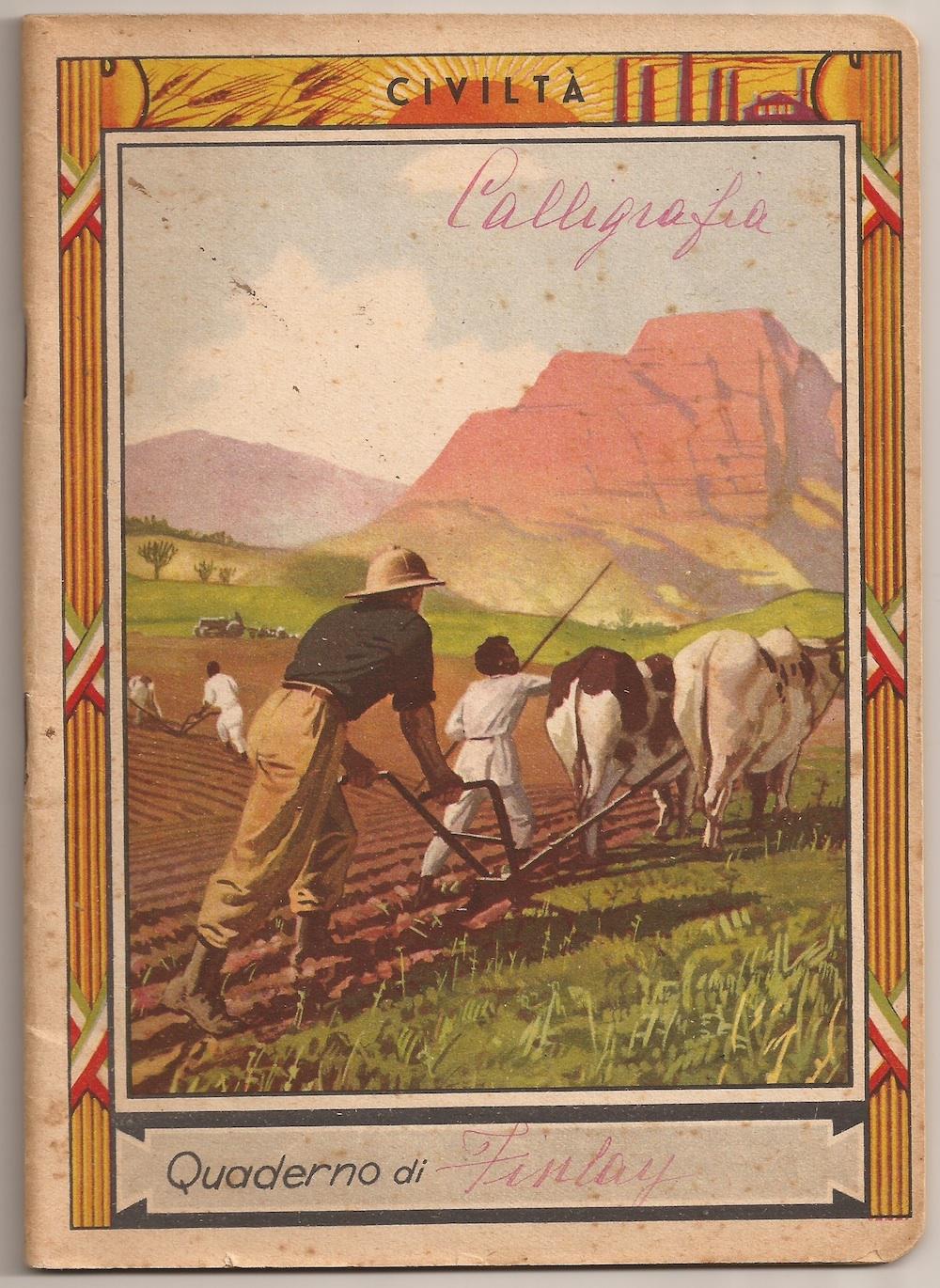
Barbara Donahue
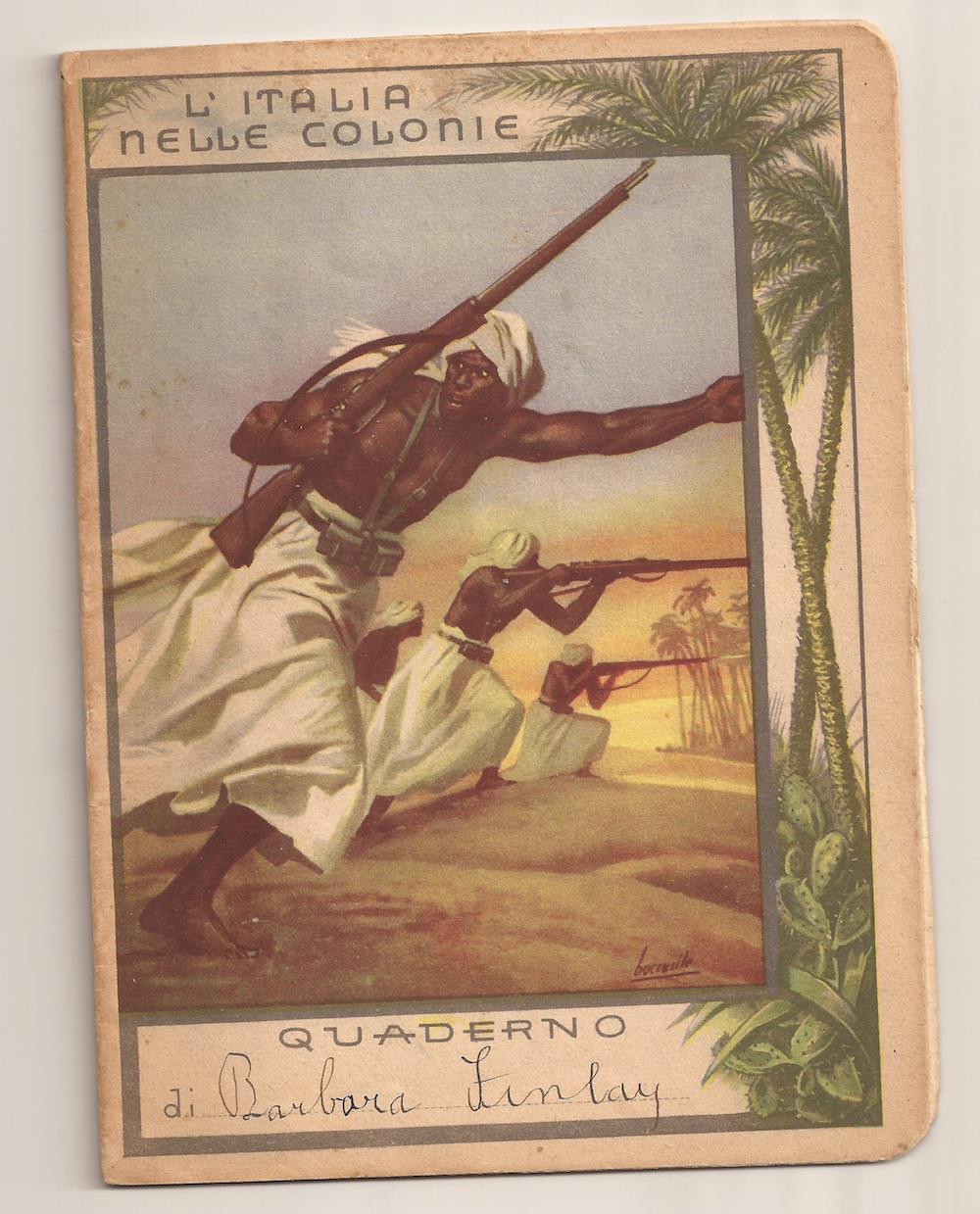
Barbara Donahue